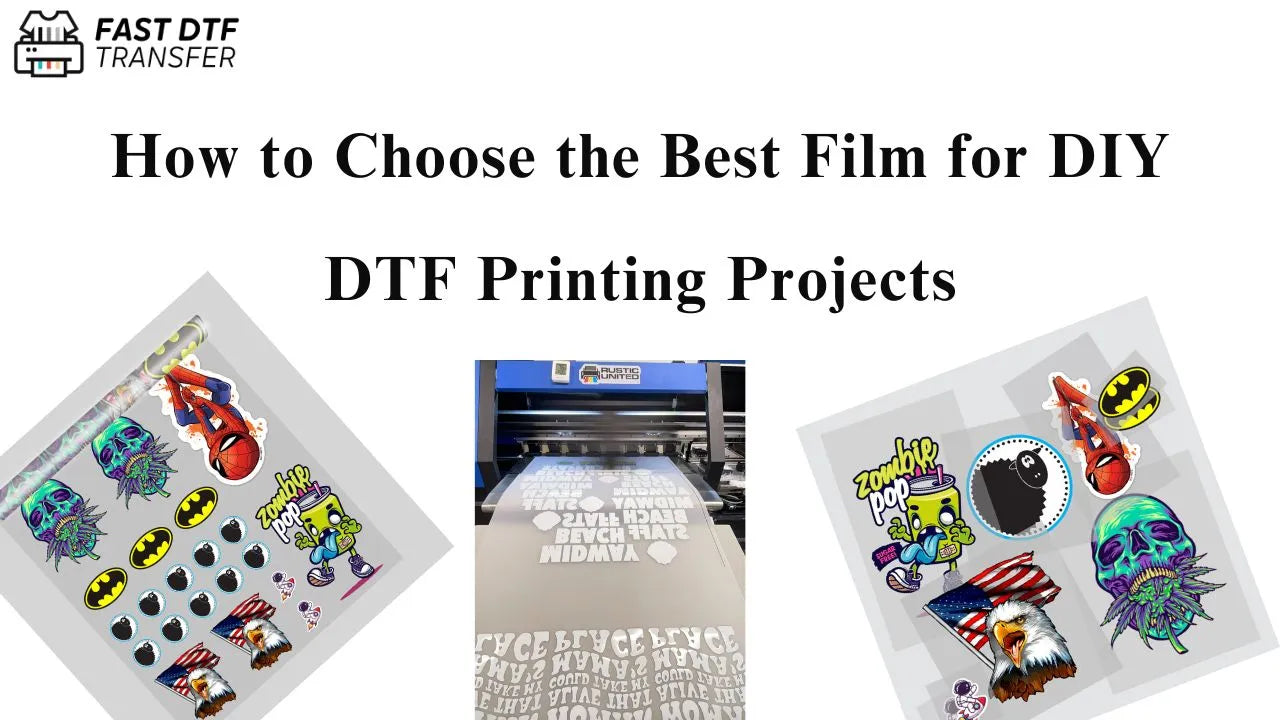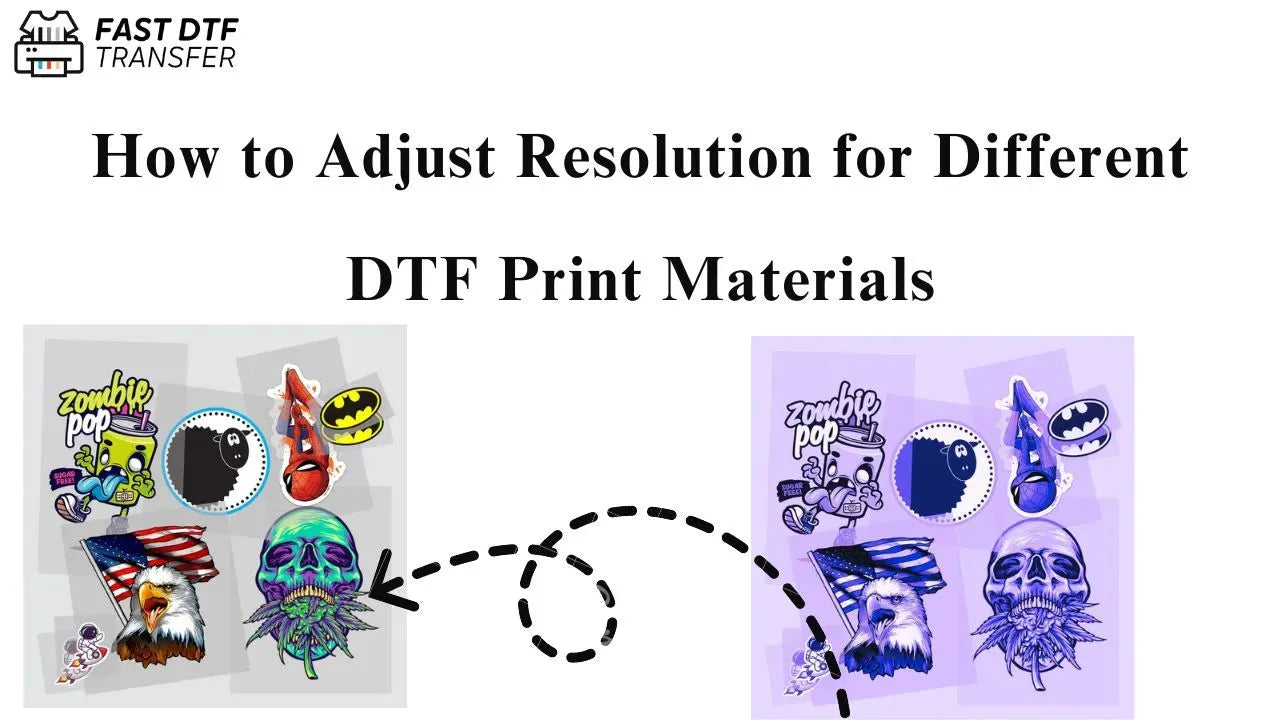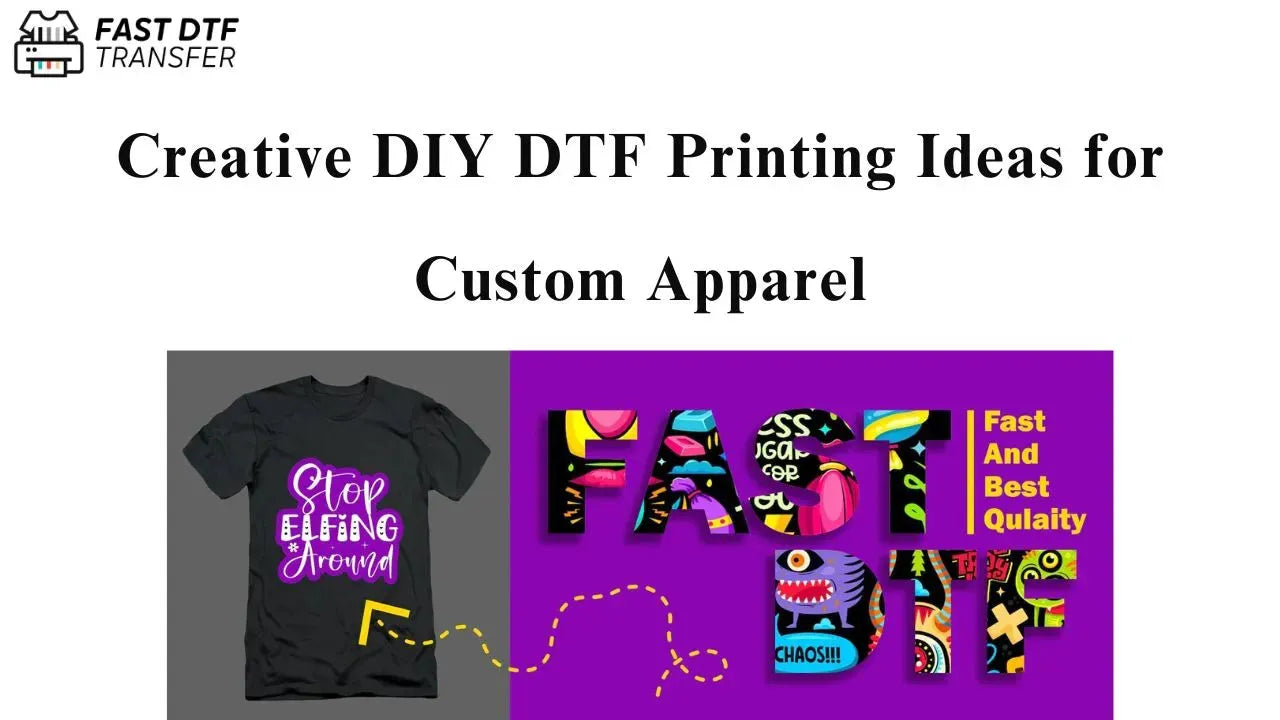
How to Choose the Best Film for DIY DTF Printing Projects

How to Choose the Best Film for DIY DTF Printing Projects
Direct to Film (DTF) printing has revolutionized the way we approach DIY printing projects, offering the ability to create stunning, high-quality designs on various surfaces like t-shirts, bags, and more. One of the most crucial components of the DTF printing process is the transfer film. The film you choose plays a significant role in the final output quality, durability, and ease of use. In this blog post, we’ll guide you through the process of selecting the best DTF film for your DIY printing projects.
What is DTF Film?
DTF film is a special type of polyester film that serves as a medium for printing designs in the DTF process. The design is first printed onto the film using a DTF printer, then coated with transfer powder, and finally transferred onto a substrate (such as fabric or hard materials) using a heat press. The quality of the film directly impacts the clarity of the print, the vibrancy of colors, and the transfer's durability.
Key Factors to Consider When Choosing DTF Film
When choosing the right DTF film for your DIY printing project, there are several factors to keep in mind:
1. Film Quality
The quality of the film is paramount to achieving the best printing results. High-quality DTF films are made from smooth, clear polyester material that allows for sharp, vibrant prints. These films have a good balance of thickness and flexibility, ensuring that the design transfers smoothly without any distortion or bleeding.
- Look for: Clear, smooth, and uniform surface for better print adhesion.
- Avoid: Films with rough or inconsistent surfaces, as they can cause ink smudging and poor-quality prints.
2. Adhesive Layer
The adhesive layer of the DTF film is what ensures that the printed design sticks to the film and transfers efficiently onto your final product. A strong adhesive layer allows for an even transfer of ink and powder. It's important to choose a film with a high-quality adhesive that ensures the print won’t peel or fade over time.
- Look for: Films with a strong and even adhesive coating.
- Avoid: Films with thin or uneven adhesive layers, as these can cause peeling and inconsistent transfers.
3. Film Thickness
The thickness of the DTF film plays a significant role in the printing process. Films that are too thin may wrinkle or tear easily during the transfer process, while films that are too thick may not allow for proper adhesion or transfer. The ideal film thickness should strike a balance between flexibility and durability.
- Look for: Films that have an optimal thickness, usually between 80-150 microns.
- Avoid: Films that are either too thin or too thick, as these can cause transfer issues.
4. Printability
Different DTF films offer varying levels of printability, which affects how well the ink adheres to the surface of the film. High-quality films allow for better ink absorption, resulting in more vibrant and crisp prints. It's essential to choose a film that is designed specifically for use with DTF printers, as other types of films may not provide the same results.
- Look for: Films specifically designed for DTF printing that offer good ink absorption and clarity.
- Avoid: Films not intended for DTF printing, as they may cause poor ink adhesion and result in low-quality prints.
5. Transfer Durability
The ultimate goal of DTF printing is to create high-quality designs that will last over time. The durability of the transfer depends not only on the ink and powder used but also on the quality of the film. A high-quality DTF film will ensure that your design adheres securely to the substrate and remains vibrant even after multiple washes.
- Look for: Films that produce durable and long-lasting transfers, with the print maintaining its color and quality after repeated washing.
- Avoid: Low-quality films that may result in transfers that fade, crack, or peel over time.
6. Compatibility with Substrates
One of the advantages of DTF printing is its versatility—allowing you to print on a wide range of substrates, including cotton, polyester, and even hard surfaces like wood and ceramics. However, not all DTF films work well with all materials. Ensure the film you choose is compatible with the type of substrate you plan to print on for the best results.
- Look for: Films that are compatible with various materials, from fabrics to hard surfaces.
- Avoid: Films that are not suitable for your chosen substrate, as this can affect the transfer quality.
Types of DTF Films
There are two main types of DTF films: Matte and Glossy. Each type offers distinct characteristics, so the one you choose will depend on your project and personal preference.
- Matte Film: Matte films give a more muted, non-reflective finish. This is great for designs where you want a more subtle, textured look. Matte films are often preferred for clothing items like t-shirts, where a soft finish is desired.
- Glossy Film: Glossy films provide a shiny, reflective finish that makes colors appear more vibrant and crisp. This type of film is ideal for designs that need to stand out and have a high-impact visual effect. It’s often used for prints on hard surfaces or promotional products.
Recommended Brands and Suppliers
When selecting DTF film, it’s essential to choose reputable brands and suppliers to ensure that you’re using high-quality materials. Some well-known brands that offer excellent DTF films include:
- TeckWrap DTF Films
- Aisha DTF Films
- Transfer Express DTF Films
- Siser DTF Film
Be sure to research different options and check reviews from other DIY enthusiasts or professionals in the DTF printing community to find the best film for your needs.
Conclusion
Choosing the best film for your DIY Direct to Film printing projects is crucial to achieving high-quality and durable prints. By considering factors like film quality, adhesive layer, thickness, printability, durability, and compatibility with substrates, you can select the ideal film that will bring your designs to life. Whether you’re printing on fabrics, hard materials, or promotional items, a good DTF film will ensure your prints are vibrant, long-lasting, and visually stunning.
1. What is DIY Direct to Film (DTF) printing?
DIY Direct to Film (DTF) printing is a method that allows you to print custom designs directly onto a special film, which is then transferred onto various substrates such as t-shirts, bags, and other materials using a heat press. It offers a versatile and cost-effective way to create vibrant, high-quality prints at home or in a small business setting.
2. What equipment do I need for DIY DTF printing?
For DIY DTF printing, you’ll need:
- A DTF printer (capable of printing with DTF inks).
- DTF film (a special transfer film).
- DTF ink (typically water-based pigment inks).
- DTF transfer powder (to help bond the ink to the film).
- A heat press (for transferring the design onto substrates).
- Design software (such as Photoshop or Illustrator) to create your designs.
3. Can I use a regular inkjet printer for DIY DTF printing?
Yes, you can use a regular inkjet printer for DIY DTF printing, but it needs to be converted to work with DTF inks and film. Many printers can be modified with the right settings, or you can buy a dedicated DTF printer. It’s important to ensure the printer can handle the special ink and film used in DTF printing.
4. What types of materials can I print on with DIY DTF printing?
DTF printing is highly versatile and can be used on a wide range of materials, including:
- Cotton, polyester, and mixed fabrics (ideal for t-shirts, hoodies, and other apparel).
- Hard materials like wood, glass, ceramics, and plastics (perfect for customized promotional products).
- Leather and other textiles.
5. How do I prepare the design for DTF printing?
To prepare a design for DTF printing:
- Create or modify your design using graphic design software such as Adobe Illustrator or Photoshop.
- Make sure your design is in high resolution (preferably 300 DPI).
- The design should be mirrored (flipped horizontally) before printing, as it will be transferred face-up.
- Save the design in a format compatible with your printer, typically PNG or TIFF.
6. What is the role of DTF transfer powder?
DTF transfer powder helps the design adhere to the film and ensures a smooth and durable transfer onto the substrate. After printing the design on the DTF film, the transfer powder is applied over the design while the ink is still wet. The powder binds to the ink and allows the design to stick securely to the substrate during the heat press process.
7. How do I apply the transfer powder?
To apply transfer powder:
- Immediately after printing your design on the DTF film, sprinkle the transfer powder over the printed design.
- Use a powder shaker or a similar tool to ensure even coverage.
- Shake off any excess powder before curing the design with heat.
8. Can I use DIY DTF printing for dark-colored fabrics?
Yes, DIY DTF printing works well on both light and dark-colored fabrics. The print quality is vibrant and opaque, which makes it suitable for dark fabrics without the need for a white underbase, as with other methods like screen printing.
9. How do I transfer the design to the substrate?
After the print has been cured and the transfer powder has set, place the DTF film onto the substrate (such as a t-shirt). Use a heat press to transfer the design:
- Set the heat press to the appropriate temperature (usually around 320-340°F / 160-170°C).
- Apply medium pressure for 10-15 seconds.
- Let the transfer cool slightly before peeling the film off to reveal the design on the fabric.
10. How long will DIY DTF prints last?
With proper care, DIY DTF prints are durable and long-lasting. They can withstand washing, fading, and cracking better than other methods like regular vinyl or heat transfers. To prolong the life of your prints, it’s recommended to wash the printed garments inside-out and avoid high heat drying.


Leave a comment
This site is protected by hCaptcha and the hCaptcha Privacy Policy and Terms of Service apply.